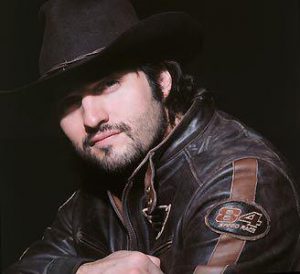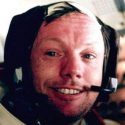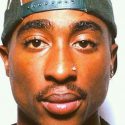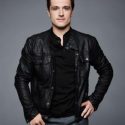How Old Is Robert Rodriguez? Robert Rodriguez Birthday
Robert Rodriguez was born on June 20, 1968 and is 55 years old now.
Birthday: June 20, 1968
How Old - Age: 55
Robert Rodriguez Death Fact Check
Robert is alive and kicking and is currently 55 years old.
Please ignore rumors and hoaxes.
If you have any unfortunate news that this page should be update with, please let us know using this form.
Is Robert Rodriguez's father, Cecilio G. Rodríguez, dead or alive?
Cecilio G. Rodríguez's information is not available now.
Is Robert Rodriguez's mother, Rebecca, dead or alive?
Robert Rodriguez's mother, Rebecca, is still alive and kicking.
Robert Rodriguez - Biography
Robert Anthony Rodriguez was born and raised in San Antonio, Texas, USA, to Rebecca (Villegas), a nurse, and Cecilio G. Rodríguez, a salesman. His family is of Mexican descent.Of all the people to be amazed by the images of John Carpenter's 1981 sci-fi parable, Escape from New York (1981), none were as captivated as the 12-year-old Rodriguez, who sat with his friends in a crowded cinema. Many people watch films and arrogantly proclaim "I can do that." This young man said something different: "I WILL do that. I'm gonna make movies." The young man in question is Robert Rodriguez and this day was the catalyst of his dream career. Born and raised in Texas, Robert was the middle child of a family that would include 10 children. While many-a-child would easily succumb to a Jan Brady-sense of being lost in the shuffle, Robert always stood out as a very creative and very active young man. An artist by nature, he was very rarely seen sans pencil-in-hand doodling some abstract (yet astounding) dramatic feature on a piece of paper. His mother, not a fan of the "dreary" cinema of the 1970s, instills a sense of cinema in her children by taking them on weekly trips to San Antonio's famed Olmos Theatre movie house and treats them to a healthy dose of Hollywood's "Golden Age" wonders, from Sergio Leone to the silent classic of Charles Chaplin and Buster Keaton.In a short amount of time, young Robert finds the family's old Super-8 film camera and makes his first films. The genres are unlimited: action, sci-fi, horror, drama, stop-motion animation. He uses props from around the house, settings from around town, and makes use of the largest cast and crew at his disposal: his family. At the end of the decade, his father, a salesman, brings home the latest home-made technological wonder: a VCR, and with it (as a gift from the manufacturer) a video camera. With this new equipment at his disposal, he makes movies his entire life. He screens the movies for friends, all of whom desperately want to star in the next one. He gains a reputation in the neighbourhood as "the kid who makes movies". Rather than handing in term papers, he is allowed to hand in "term movies" because, as he himself explains, "[the teachers] knew I'd put more effort into a movie than I ever would into an essay." He starts his own comic strip, "Los Hooligans". His movies win every local film competition and festival. When low academic grades threaten to keep him out of UT Austin's renowned film department, he proves his worth the only way he knows how: he makes a movie. Three, in fact: trilogy of short movies called "Austin Stories" starring his siblings. It beats the entries of the school's top students and allows Robert to enter the programme. After being accepted into the film department, Robert takes $400 of his own money to make his "biggest" film yet: a 16mm short comedy/fantasy called Bedhead (1991).Pouring every idea and camera trick he knew into the short, it went on to win multiple awards. After meeting and marrying fellow Austin resident Elizabeth Avellan, Robert comes up with a crazy idea: he will sell his body to science in order to finance his first feature-length picture (a Mexican action adventure about a guitarist with no name looking for work but getting caught up in a shoot-'em-up adventure) that he will sell to the Spanish video market and use as an entry point to a lucrative Hollywood career. With his "guinea pig" money he raises a mere $7,000 and creates El mariachi (1992). But rather than lingering in obscurity, the film finds its way to the Sundance film festival where it becomes an instant favourite, wins Robert a distribution deal with Columbia pictures and turns him into an icon among would-be film-makers the world over. Not one to rest on his laurels, he immediately helms the straight-to-cable movie Roadracers (1994) and contributes a segment to the anthology comedy Four Rooms (1995) (his will be the most lauded segment).His first "genuine" studio effort would soon have people referring to him as "John Woo from south-of-the-border". It is the "Mariachi" remake/sequel Desperado (1995). More lavish and action-packed than its own predecessor, the movie--while not a blockbuster hit--does decent business and single-handedly launches the American film careers of Antonio Banderas as the guitarist-turned-gunslinger and Salma Hayek as his love interest (the two would star in several of his movies from then on). It also furthers the director's reputation of working on low budgets to create big results. In the year when movies like Batman Forever (1995) and GoldenEye (1995) were pushing budgets past the $100 million mark, Rodriguez brought in "Desperado" for just under $7 million. The film also featured a cameo by fellow indie film wunderkind, Quentin Tarantino. It would be the beginning of a long friendship between the two sprinkled with numerous collaborations. Most notable the Tarantino-penned vampire schlock-fest From Dusk Till Dawn (1996). The kitschy flick (about a pair of criminal brothers on the run from the Texas Rangers, only to find themselves in a vamp-infested Mexican bar) became an instant cult favourite and launched the lucrative film career of ER (1994) star George Clooney.After a two-year break from directing (primarily to spend with his family, but also developing story ideas and declining Hollywood offers) he returned to "Dusk till Dawn" territory with the teen/sci-fi/horror movie The Faculty (1998), written by Scream (1996) writer, Kevin Williamson. Although it's developed a small following of its own, it would prove to be Robert's least-successful film. Critics and fans alike took issue with the pedestrian script, the off-kilter casting and the flick's blatant over-commercialization (due to a marketing deal with clothing designer Tommy Hilfiger). After another three-year break, Rodriguez returned to make his most successful (and most unexpected) movie yet, based on his own segment from Four Rooms (1995). After a string of bloody, adult-oriented action fare, no one anticipated him to write and direct the colourful and creative Spy Kids (2001), a movie about a pair of prepubescent Latino sibs who discover that their lame parents (Antonio Banderas and Carla Gugino) are actually two of the world's greatest secret agents. The film was hit among both audiences and critics alike.After quitting the Writers' Guild of America and being introduced to digital filmmaking by George Lucas, Robert immediately applied the creative, flexible (and cost-effective) technology to every one of his movies from then on, starting with an immediate sequel to his family friendly hit: Spy Kids 2: Island of Lost Dreams (2002) which was THEN immediately followed by the trilogy-capper Spy Kids 3-D: Game Over (2003). The latter would prove to be the most financially-lucrative of the series and employ the long-banished movie gimmick of 3-D with eye-popping results. Later the same year Rodriguez career came full circle when he completed the final entry of the story that made brought him to prominence: "El Mariachi". The last chapter, Once Upon a Time in Mexico (2003), would be his most direct homage to the Sergio Leone westerns he grew up on. With a cast boasting Antonio Banderas (returning as the gunslinging guitarist), Johnny Depp (as a corrupt CIA agent attempting to manipulate him), Salma Hayek, Mickey Rourke, Willem Dafoe and Eva Mendes, the film delivered even more of the Mexican shoot-'em-up spectacle than both of the previous films combined.Now given his choice of movies to do next, Robert sought out famed comic book writer/artist Frank Miller, a man who had been very vocal of never letting his works be adapted for the screen. Even so, he was wholeheartedly convinced and elated when Rodriguez presented him with a plan to turn Miller's signature work into the film Sin City (2005). A collection of noir-ish tales set in a fictional, crime-ridden slum, the movie boasted the largest cast Rodriguez had worked with to that date. Saying he didn't want to mere "adapt" Miller's comics but "translate" them, Rodriguez' insistence that Miller co-direct the movie lead to Robert's resignation from the Director's Guild of America (and his subsequent dismissal from the film John Carter (2012) as a result). Many critics cited that Sin City (2005) was created as a pure film noir piece to adapt Miller's comics onto the screen. Co-directing with Frank Miller and 'Quentin Tarantino' (who guest-directed in That Yellow Bastard) allowed Rodriquez to again shock Hollywood with his talent.In late 2007, Rodriquez again teamed up with his friend Tarantino to create the double-episode film, The Grindhouse featuring Rodriquez's offering of Planet Terror (2007). Planet Terror (2007) was a film shot in the specific genre of "hardcore, extreme, sex-fueled, action packed." Rodriguez flirts with his passion to make a showy film exploiting all of his experience to make an extremely entertaining thrill ride. The film is encompassed around Cherry (Rose McGowan), a reluctant go-go dancer who is found wanting when she meets her ex-lover El Wray (played by Freddy Rodríguez) who turns up at a local BBQ grill. They then, after a turn of events, find themselves fending off brain-eating zombies whilst trying to flee to Mexico (here we go off to Mexico again). Apart from directing, Rodriquez also involves himself in camera work, editing and composing music for his movies sound tracks (he composed the Planet Terror (2007) main theme). He also shoots a lot of his own action scenes to get a direct idea from his eye as the director into the film. In El mariachi (1992), Rodriquez spent hours in front of a pay-to-use, computer editing his film. This allowed him to capture the ideal footage exactly as he wanted it. Away from the filming aspect of Hollywood, Rodriguez is an expert chef who cooks gourmet meals for the cast and crew. Rodriquez is also known for his ability to turn a low-budgeted film with a small crew into an example of film mastery. El mariachi (1992) was "the movie made on seven grand" and still managed to rank as one of Rodriguez' best films (receiving a rating of 92% on the Rotten Tomatoes film review site).Because Rodriquez is involved so deeply in his films, he is able to capture what he wants first time, which saves both time and money. Rodriguez's films share some similar threads and ideas, whilst also having differences. In El mariachi (1992), he uses a hand-held camera. He made this decision for several reasons. First, he couldn't afford a tripod and secondly, he wanted to make the audience more aware of the action. In the action sequences he is given more mobility with a hand-held camera and also allows for distortion of the unprofessional action sequences (because the cost of all special effects in the film totaled $600). However, in Sin City (2005) and Planet Terror (2007), the budget was much greater, and Rodriquez could afford to spend more on special affects (especially since both films were filmed predominately with green screen) and, thus, there was no need to cover for error.Playing by his own rules or not at all, Robert Rodriguez has redefined what is and is not for a film-maker to do. Shunning Hollywood's ridiculously-high budgets, multi-picture deals and the two most powerful unions for the sake of maintaining creative freedom are decisions that would (and have) cost many directors their careers. Rodriguez has turned these into his strengths, creating some of the most imaginative works the big-screen has ever seen.- IMDb Mini Biography By: fan@rodriguez.al.ru and Buddy-L, Daly City, Ca. and Peter WerdaTrade Mark (17)DVD releases of his movies always include a do-it-yourself/behind-the-scenes features on the movies entitled "10-minute Film School" (although they are rarely actually ten minutes). Beginning with the disc for Once Upon a Time in Mexico (2003), he's also begun including "10-minute Cooking School" to show how to cook the trademark dishes his characters dine on.Frequently sets his films in TexasFrequently begins films with a scene where a supporting character is talking to another supporting character about the main character. See: Desperado, From Dusk Till Dawn, Once Upon a Time in Mexico.Characters getting shot in the hand (See: El mariachi (1992), From Dusk Till Dawn (1996))Over-the-top and surreal action scenesCowboy hatFrequently uses Antonio Banderas, Salma Hayek, Cheech Marin, Danny Trejo, Elijah Wood and Robert Patrick.Famous for working and delivering on relatively low budgets (partly by taking on multiple production roles himself in addition to writing and directing). His most expensive movie, Sin City (2005), cost $40 million while most are budgeted $20 million or lower. He also has final cut and final approval of all marketing materials in his contracts.A huge fan of John Carpenter, Rodriguez will often make reference to his films in his own. E.g., the drug test scene in The Faculty (1998) to see who's an alien is a direct reference to the blood test scene in The Thing (1982).His adult-oriented movies always feature a fictional brand of beer called "Cerveza Chango". Chango is the Orisha (a deity as in the Afro-Cuban religion of Santeria - an amalgam of African tradition and Catholocism) of fire, lightning and dance. Chango is renowned for the way he avenges crimes against the innocent, a recurring theme in Rodriguez-movies in which the fictional beer appears.Shoots all his films digitally since Spy Kids 2: Island of Lost Dreams (2002)Often uses images of scorpions in his filmsMany of his characters are mysterious, shady anti-heroes with violent pastsFamily plays a big part in his films, especially sibling relationships. In Desperado, the main characters are brothers. In From Dusk Till Dawn, the Gekko Brothers care deeply for one another despite their sociopathic nature, etc.His heroes often dress entirely in blackUnlike many action films, his often show the characters reloading their weapons at realistic times and carrying ammunition.Hispanic themes, settings and charactersTrivia (31)Brother of Elizabeth Rodriguez, Tina Rodriguez, David Rodriguez, Rebecca Rodriguez, Patricia Vonne, and Angela Lanza. Cousin of Álvaro Rodríguez & actor Danny Trejo.Went to St. Anthony's High School.Studied at St. Anthony's University, The University of Texas at Austin.He earned most of the $7000 it cost to make El mariachi (1992) by subjecting himself to experimental drug studies. One of the experimental drugs that was tested on Rodriguez was a "speed healer." He has two divots in his arms as a result of the removed sample.In April of 1996, headed the list of "25 Most Powerful Hispanics in Hollywood", published by Hispanic Magazine.In May 1999 he was honored with the Outstanding Young Texas Award by the Ex- Students' Association.Has 5 children with Elizabeth Avellan: sons Rocket Rodriguez, Racer Rodriguez, Rebel Rodriguez, Rogue Rodriguez and daughter Rhiannon Rodriguez.Ranked #80 in Premiere's 2003 annual Power 100 List. Had ranked #94 in 2002.Set up a symphony orchestra in his garage to record the score for Spy Kids 2: Island of Lost Dreams (2002).He wrote two scripts for "Predator 3" (which later became AVP: Alien vs. Predator (2004)). One took place at a ship in the 17th century, while the second one was about Arnold Schwarzenegger and Danny Glover's characters being taken to the alien planet, as trophies.Turned down the chance to direct Kevin Smith's script for "Superman Lives" (which as of 2004 is not being made in to a feature film, having been replaced with another script). Kevin Smith also pursued Rodriguez to helm his controversial religious satire Dogma (1999). Rodriguez turned it down, insisting that the project was so personal that Smith ought to do it himself.His production company was called "Los Hooligans", named after the comic strip he drew in college, but it is now titled "Troublemaker Studios".Left the Writers' Guild of America (WGA) in late 2001, citing the organization had "too many rules and just take your money."The last of his movies shot on film was Spy Kids (2001). During post-production of that film at Skywalker Ranch, George Lucas introduced him to 24p HD film-making and Rodriguez was immediately converted. He owns two Sony HDW-F900 cameras, the same model used by Lucas on the Star Wars prequels.Was originally chosen to direct John Carter (2012) for Paramount and had already begun some of the preproduction in early 2004. However, once he left the DGA, Paramount (which will only allow their films to be directed by DGA members) replaced him.Directed parts of the scene in Pulp Fiction (1994) where Quentin Tarantino appears as Jimmy. (Rodriguez was uncredited for his directing.)After seeing John Carpenter's Escape from New York (1981) at age 12, he knew he wanted to be a filmmaker.Edited El mariachi (1992) at a public access station in Austin, Texas. He edited from late at night to the early hours in the morning, because the time was cheaper. However the station would often close up, setting the alarm; this meant he would have to stay at his editing bench for eight hours at a time without restroom breaks.Absolutely loathed the fact that he had to shoot his movies on film to enter them into film festivals. Soon after Bedhead (1991) and El mariachi (1992) hit, many festivals began admitting video formats.Directed, shot and edited a concert film for Del Castillo entitled Del Castillo (2003). He and Castillo share several band members. Rodriguez uses them in his newly-formed band, Chingon (Spanish for "bad ass"). They recently released an album and played on the end credits for Kill Bill: Vol. 2 (2004) for his friend, Quentin Tarantino.Salma Hayek is his children's godmother.Is an accomplished chef.Has resigned from the DGA twice. The first time was so he could directed the non-guild Four Rooms (1995) with Quentin Tarantino and two other directors. The second time was in 2004 when he wanted to give Frank Miller a co-director credit for Sin City (2005). Other notable DGA "defectors" include his close friends George Lucas and Quentin Tarantino.Ranked #48 on Premiere's 2005 Power 50 List. Had ranked #61 in 2004.Since 1998, he has possessed the film rights to the comic book "Madman" by Mike Allred. Although the film has yet to be produced, Allred is the one who helped Rodriguez get in touch with Frank Miller, which led to the latter's own comic property becoming the movie Sin City (2005). As of 2006, Rodriguez and Allred have gone on record as saying that a screenplay for the "Madman" movie (based on an outline by the two of them) had been written by George Huang, with hopes to start shooting before the end of 2006.Was originally attached to direct The Mask of Zorro (1998), but the studio didn't agree with his much more violent and R-rated proposal.[2008] Engaged to Rose McGowan.Received his honorary degree in communications, and received his actual degree from the University of Texas, College of Communications in 2009.Lives in Austin, Texas.Close friends with Quentin Tarantino and Kevin Smith. Often the three will be among the first to view each other's films and offer their feedback.Was considered to direct X. Men (2000) but turned it down in favor of other projects.Personal Quotes (3)I didn't want Frank [Miller, creator of the comic "Sin City" and co-writer on the film] to be treated just as a writer because he is the only one who has actually been to 'Sin City'. I am making such a literal interpretation of his book that I'd have felt weird taking directing credit without him. It was easier for me to quietly resign because otherwise I'd have been force to make compromises I was unwilling to make, or set a precedent that might hurt the guild later on. -- March, 2004 in response to why he left the Directors' Guild of America just before the filming of Sin City (2005)I always consider Salma [Hayek] for my projects, even for male roles.Video technology puts filmmaking back in the hands of the people. That's how I learned how to make movies - making movies at home.








